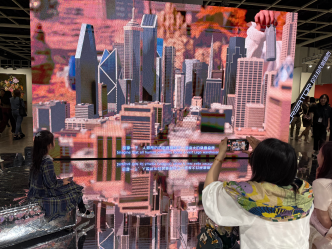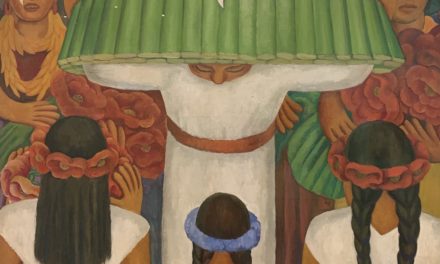Impactful buildings
Architecture these days is facing two major strong and opposing trends. On the one hand it is expressed through its conquest of large-scale sites across the planet, through the construction of visually impactful, powerful and innovative buildings. These are generally the flagbearers for new projects that spread all over the world, driven by the States, like China and Saudi Arabia. (See here a report about Pritzker Prize Tadao Ando, here about Pritzker Prize Norman Foster and here about Pritzker Prize Frank Gehry).
Dismantling the principles
On the other hand, it deconstructs. Since architecture is a symbol of power, its new theoreticians are dismantling the governing principles to create buildings that tell the story of Western power, colonization, the expression of the majority in relation to minorities etc. The eighteenth edition of the Venice Architecture Biennale, the international showcase in the field, is – with all its peripheral events as well – an almost perfect reflection of these two trends.
Lesley Lokko
The curator of the Biennale, Lesley Lokko, a Scottish and Ghanaian academic, has given it the title: “The Laboratory of the Future”. She has conceived a huge show that extends as usual across the Arsenale and the Giardini, with 89 participants, half of whom are African or from the African diaspora. Instead of a large-scale technical display of contemporary architecture – she is a professor and doesn’t build herself – she has created a manifesto that aims to shake the world on the subject of the weight of its colonial heritage and forgotten territories, with a major focus, therefore, on the African continent.
Like a contemporary art exhibition
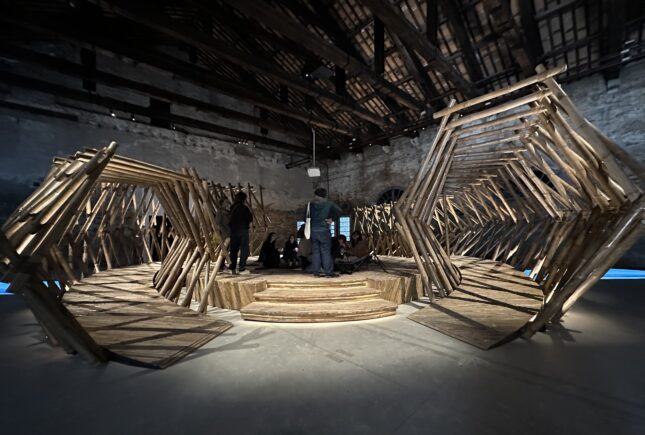
Philippine Pavilion
As a result, the show more closely resembles a contemporary art exhibition than an architectural exhibition, strictly speaking. (See here the report about the last Venice Art Biennale)
Very skilful in her rhetoric, Lokko speaks openly about her personal experiences – her father, a surgeon in Ghana, her literary agent… – rather than what she is displaying in Venice.
Here is a selection of the most striking exhibits in Venice during this time
Kwae by Adjaye Associates (Arsenale)
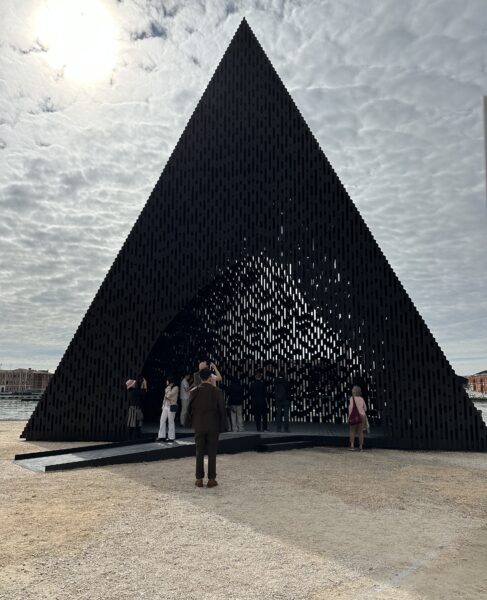
Adjaye Associates
The majority of pieces of “classical” architecture due to visit the Biennale this year therefore features few models of buildings or documentation of such and such a construction, except for the British-Ghanaian architect David Adjaye (born in 1966) who has also just designed the three buildings for the Abrahamic Family House in Abu Dhabi, dedicated to depicting and cohabiting the three monotheistic religions. In Venice he is presenting, among other things, a kind of large multifunctional triangular structure composed of an assemblage of timber elements.

Adjaye Associates
Sammy Baloji (Arsenale)
Lesley Lokko’s exhibition is clearly conceptual. She is taking the pulse of society’s ills by showcasing manifestos, visual presentations, videos, installations: “I don’t really see the distinction between artists and architects. If artists are working by addressing questions of space and society, they all have a right to be part of an architecture biennale,” she observes. Among the striking presences in this Biennale, at the entrance to the Arsenale there is a powerful and dramatic installation made by the Belgian-Congolese artist Sammy Baloji (born in 1979).
Belgian colonial times
This commission from the Biennale addresses, among other things, in a video that blends current and archive images, agricultural experiments in the Yangambi region during Belgian colonial times in the Congo. “During the colonial period various initiatives emerged that used the Congo as a ground for experimentation. There are multiple traces that remain in agriculture and in the local architecture too,” says the artist, who received a “special mention” from the jury at the 18th Biennale.
Theaster Gates (Giardini) (Fondazione Prada) (Palazzo Grassi)
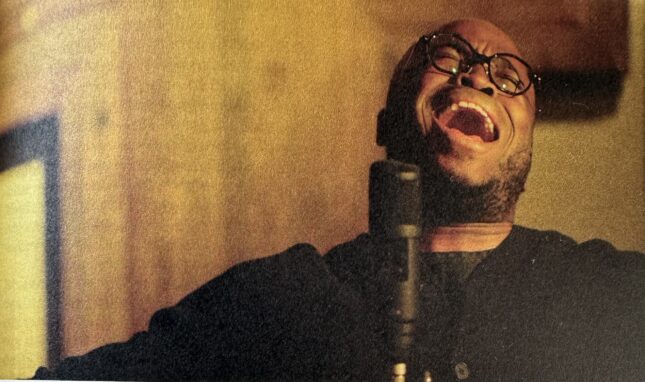
Theaster Gates
This year one of the artists who is most present in Venice is Theaster Gates (born in 1973). The American artist who is famous for having disrupted the ecosystem of his hometown, Chicago, in a deprived area with an original artistic and social initiative, expresses a phenomenal power in his performances.
Black artists’s retreat
Not only is the Prada Foundation presenting one of his videos in the exhibition that is quite abstruse, “Everybody talks about the weather”, there is also the exhibition at the Pinault collection’s Punta della Dogana, called Icon, and lastly in the very heart of the Biennale in the Giardini he appears with a stunning video that recounts his staging of a “Black artists’ retreat”, a project creating a forum for black artists in Chicago who have come from all over America. It was first met with surprise before generating enthusiasm. (See here a report about Theaster Gates)
Looty (Arsenale)
Walking through the Biennale at the heart of the Arsenale brings surprises, such as the collective of African artists based in London, Looty, who are transforming works stolen during colonial times and placing them virtually back in their places of origin using virtual reality.
The Latvian Pavilion (Arsenale)
The Latvian Pavilion, occupied by the architect and exhibition curator Ints Mengelis, has created a mini supermarket in which products that seem to be from current consumption in fact bear the names of architectural concepts covered during previous biennales. The minimart offers cleaning products and fresh fruits with brands as convoluted as “Suburban to Super Rural” or Extreme Nature: Ambiguous Spaces”.
Brazilian Pavilion (Giardini)
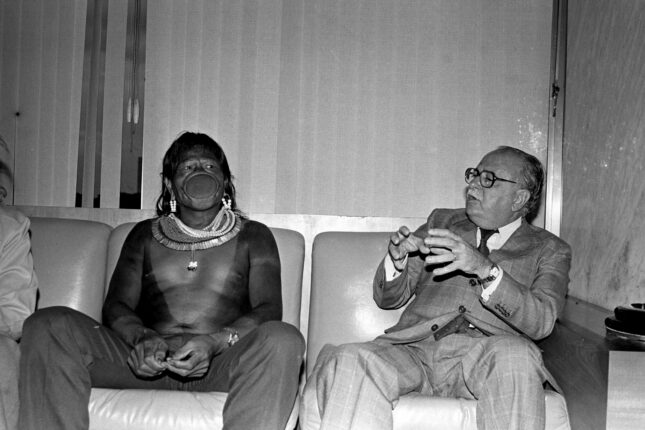
Raoni Metuktire, Brasilian Pavillion
This year the Architecture Biennale’s Golden Lion was awarded to the Brazilian pavilion. They are showcasing a manifesto-exhibition that brings together the work of artists and documentary-makers about the chaos and violence in Brazil. A documentary by Juliana Vicente places a spotlight on Amazonian indigenous people, one of whom says: “The world is in crisis. We are here to heal it.”
English Pavilion (Giardini)
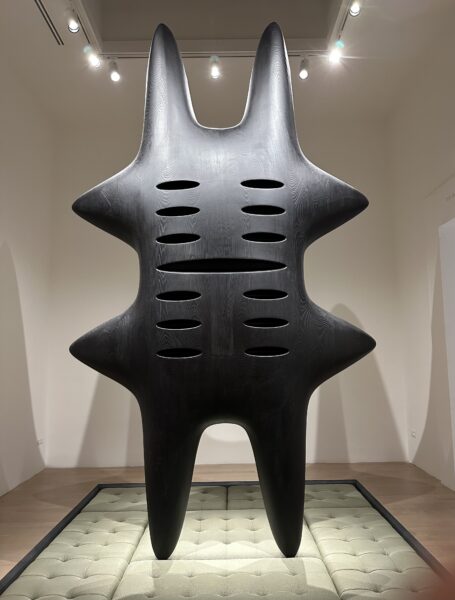
British Pavilion
A special mention was given by the Biennale committee to the British pavilion, entitled “Dancing Before the Moon”, which uses an atmosphere of movement to address decolonization and also celebration, taking the guiding principle of James Baldwin: “There is a reason after all that some people wish to colonize the moon and others dance before it as an ancient friend”.
Art Mill museum, Alejandro Aravena (Palazzo Franchetti)
The Venice Biennale is also a kind of Cannes Festival for architecture, during which the stars of the field like to display their projects. So on the banks of the Grand Canal, on one floor of the Palazzo Franchetti, Qatar are exhibiting in a very classical format the models and texts for “Building a Creative Nation”: Qatar’s architectural projects on the horizon for 2030. The Chilean architect Alejandro Aravena (born in 1967), laureate of the Pritzker Prize in 2016, is presenting here his sprawling and highly anticipated Art Mill museum: a museum dedicated to modern and contemporary art. In this original display he is repurposing the grain silos of the original site for a project which, as the architect explains, is the size of a village. It is the French Catherine Grenier, president of the Giacometti Foundation, who is overseeing the concept for this institution, which claims to be global and multidisciplinary.
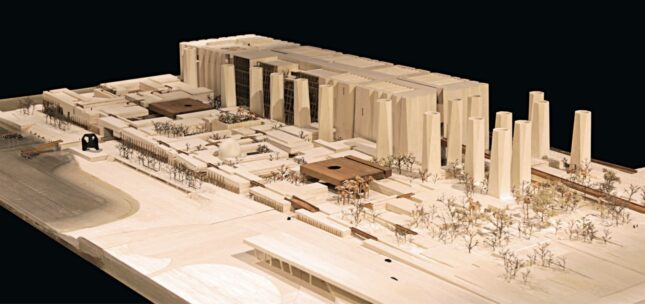
Art was not important
The surprise in the interview with Aravena came with the question on his relationship with art: “To be honest, for a long time I personally wasn’t really interested in art. I thought art was what people did when they already had all their basic needs met. But in 2019 in Chile, with the social explosion, I understood that you had to share a History, a vision. I then realized that art is one of the rare tools that allow us to create this sense of belonging.”
Lina Ghotmeh
Since 2000, outside of Venice, one of the key events in terms of architecture has been the pavilion that is annually set up in London for the Serpentine Gallery, inaugurated this year on 5 June. This time it is Lina Ghotmeh (born in 1980), the Lebanese architect who works in Paris, who has designed it. Naturally she was present at the Biennale at the opening. She explains that she wanted to turn the 2023 pavilion at the Serpentine, entitled “À table”, into a convivial meeting place, “which proves how delightful architecture can be. It’s an open pavilion for everyone and even a space to think differently about our future.” In Venice she also announced her project for a contemporary art museum in Saudi Arabia as part of the archaeological site AlUla.
The Ocean Space San Lorenzo
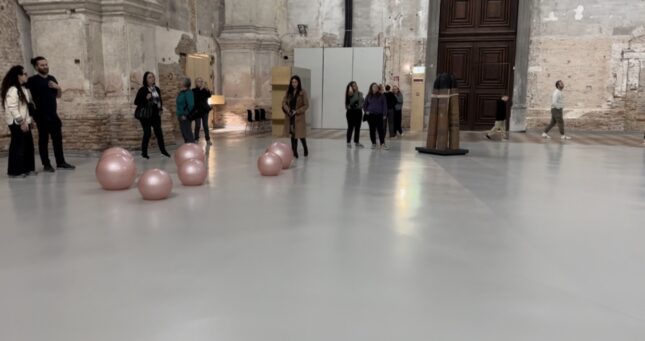
Simone Fattal
The Ocean Space is an initiative from Austrian collector Francesca Thyssen-Bornemisza that is intended to raise awareness through art of issues of ocean conservation. The site, which is spectacular, is located in San Lorenzo within an extravagant 17th-century church which was apparently the favourite of Vivaldi as a venue for his concerts.
Simone Fattal
The foundation is occupied on the one hand by a duo, Petrit Halilaj & Alvaro Urbano, who have designed large metal birds that dot the sky of the deconsecrated church, and on the other there is the Lebanese artist who lives in Paris, Simone Fattal (born in 1942). The latter is revisiting, in a very poetic way, through ceramic and glass sculptures, Eastern legends that talk about the sea.
Massimo Micheluzzi, Negozio Olivetti, Piazza San Marco
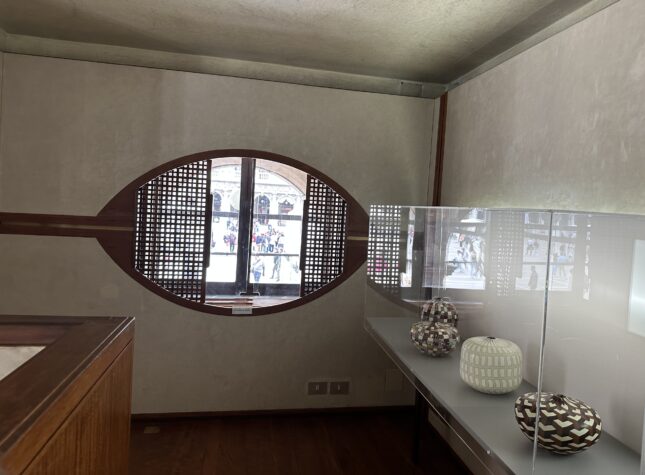
Negozio Olivetti
In the Piazza San Marco there is a gem of Italian design, a heritage site: the old Olivetti showroom for typewriters, designed by the architecture star Carlo Scarpa in 1957. A blend of polished concrete, wood and metal blades, dating from 1957, in which a staircase that looks like it is suspended in the air leads to the exhibition space. The Venetian glass historian and curator Cristina Beltrami is showcasing 22 contemporary creations in glass, demonstrating great technical prowess: vases conceived as mosaics of glass blown by the master Massimo Micheluzzi in dialogue with the mosaics of the boutique. A display of extreme elegance.
Support independent news on art.
Your contribution : Make a monthly commitment to support JB Reports or a one off contribution as and when you feel like it. Choose the option that suits you best.
Need to cancel a recurring donation? Please go here.
The donation is considered to be a subscription for a fee set by the donor and for a duration also set by the donor.

